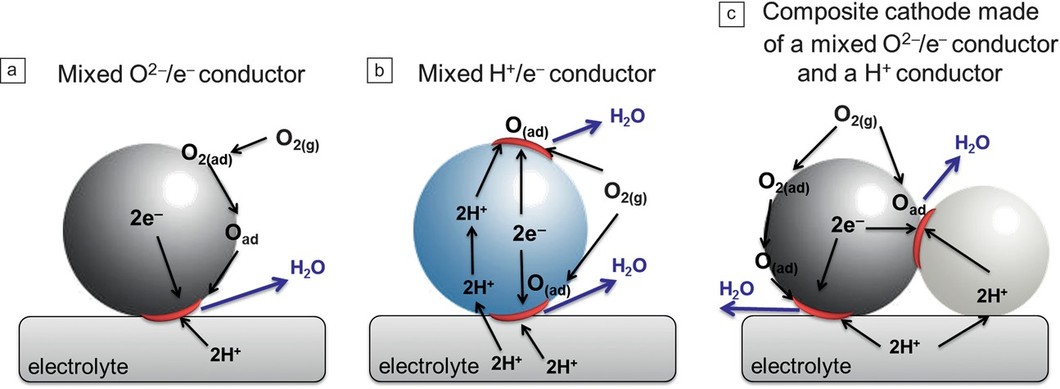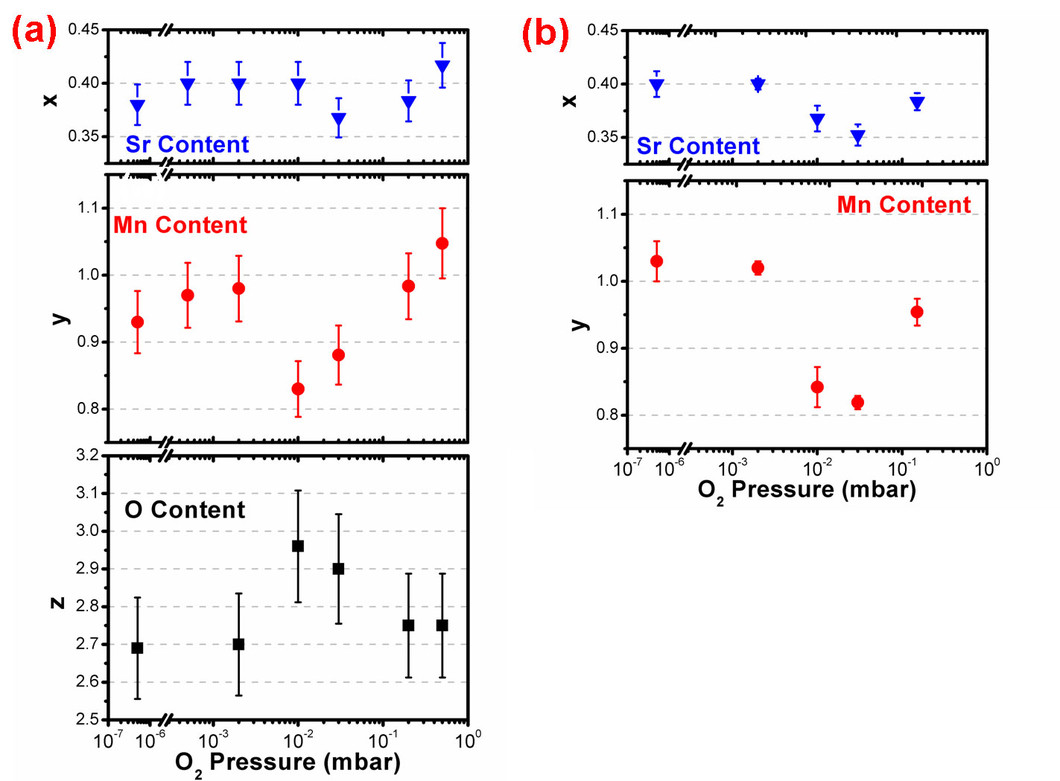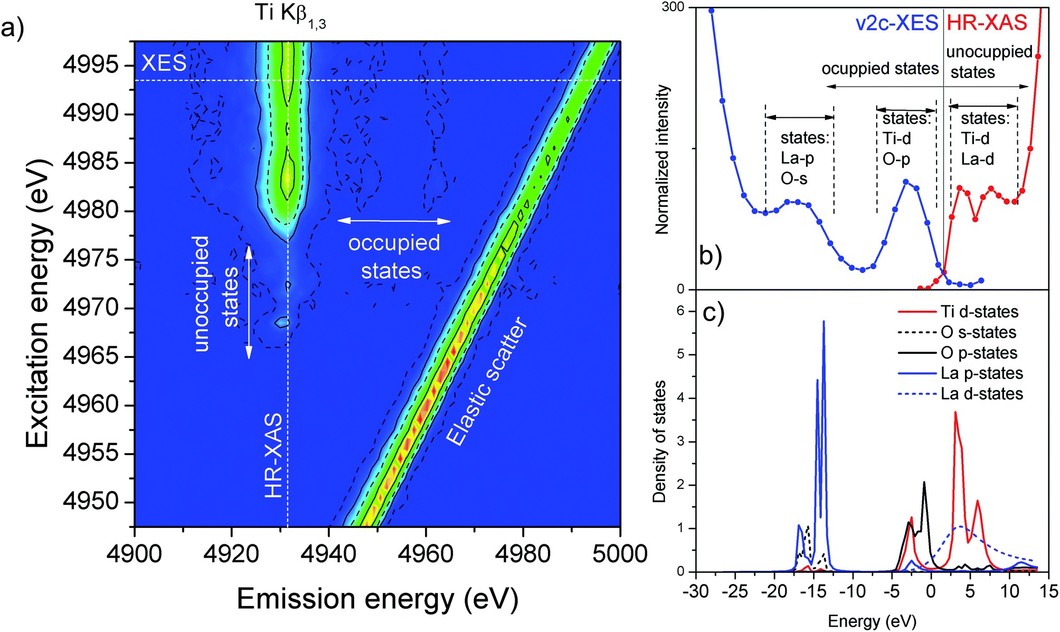Scientific Highlights 2014
Multiferroic Properties of o−LuMnO3 Controlled by b-Axis Strain
Abstract:Temperature dependence of the (050) reflection from a 200 nm o−LuMnO3 [110]-oriented film. Inset (a): Temperature dependence of the integrated intensity from the (050) structural reflection (black) and the (0qb≈½0) magnetic reflection (red) of this film. Inset (b): The simplest approximation for a distortion producing nonzero intensity for a (0k0) reflection with k odd, depicted for two atoms along the b direction.
Strain is a leading candidate for controlling magnetoelectric coupling in multiferroics. Here, we use x-ray diffraction to study the coupling between magnetic order and structural distortion in epitaxial films of the orthorhombic (o-) perovskite LuMnO3. An antiferromagnetic spin canting in the E-type magnetic structure is shown to be related to the ferroelectrically induced structural distortion and to a change in the magnetic propagation vector. By comparing films of different orientations and thicknesses, these quantities are found to be controlled by b-axis strain. It is shown that compressive strain destabilizes the commensurate E-type structure and reduces its accompanying ferroelectric distortion.
Low-temperature solid-oxide fuel cells based on proton-conducting electrolytes
Abstract:Possible reactions at the cathode using (a) a mixed O2- ion/e− conductor, (b) a mixed H+/e− conductor, and (c) a composite cathode made of a proton conductor phase and a mixed O2–/e− conductor phase. The dark gray spheres represent a mixed O2–/e− conductor phase, the light blue sphere is a mixed H+/e– conductor, while the light gray sphere is a H+ conductor. The red semicircles represent the reaction sites where the oxygen reduction takes place.
The need for reducing the operating temperature of solid-oxide fuel cells (SOFCs) imposed by cost reduction has pushed significant progress in fundamental understanding of the individual components, as well as materials innovation and device engineering. Proton-conducting oxides have emerged as potential alternative electrolyte materials to oxygen-ion conducting oxides for operation at low and intermediate temperatures. This article describes major recent developments in electrolytes, electrodes, and complete fuel cell performance for SOFCs based on proton-conducting electrolytes. Although the performance of such fuel cells is still relatively modest, significant improvements in the power density output have been made during the last couple of years, and this trend is expected to continue.
Plasma interactions determine the composition in pulsed laser deposited thin films
Abstract:Sr, Mn, and O content in La0.6SrxMnyO3-Δ thin films: (a) deposited on (001) SrTiO3 substrate at 650 °C as a function of the O2 background pressure using an ablation fluence of 1.8 J/cm2; (b) deposited on (001) Si substrate at room temperature as a function of the O2 background pressure using an ablation fluence of 1.8 J/cm2.
Plasma chemistry and scattering strongly affect the congruent, elemental transfer during pulsed laser deposition of target metal species in an oxygen atmosphere. Studying the plasma properties of La0.6Sr0.4MnO3, we demonstrate for as grown La0.6Sr0.4MnO3-δ films that a congruent transfer of metallic species is achieved in two pressure windows: ∼10−3 mbar and ∼2 × 10−1 mbar. In the intermediate pressure range, La0.6Sr0.4MnO3-δ becomes cation deficient and simultaneously almost fully stoichiometric in oxygen. Important for thin film growth is the presence of negative atomic oxygen and under which conditions positive metal-oxygen ions are created in the plasma. This insight into the plasma chemistry shows why the pressure window to obtain films with a desired composition and crystalline structure is narrow and requires a careful adjustment of the process parameters.
Determination of conduction and valence band electronic structure of La2Ti2O7 thin film
Abstract:
The electronic structure of a La2Ti2O7-layered perovskite thin film was determined by resonant inelastic X-ray scattering (RIXS) measurements and FEFF calculations. It was found that the empty Ti and La d-band states dominate the conduction band of the structure, whereas the top edge of the valence band is mainly composed of filled O-p states. Furthermore, there is a pronounced overlap between occupied La-p states and O-s states, which are located deeper in the valence band.
![Temperature dependence of the (050) reflection from a 200 nm o−LuMnO3 [110]-oriented film. Inset (a): Temperature dependence of the integrated intensity from the (050) structural reflection (black) and the (0qb≈½0) magnetic reflection (red) of this film. Inset (b): The simplest approximation for a distortion producing nonzero intensity for a (0k0) reflection with k odd, depicted for two atoms along the b direction.](/sites/default/files/styles/primer_content_lg/public/import/lmx-interfaces/ScientificHighlights2014EN/LMO_Strain_Will_PRL_2014.jpg?itok=EgaGsd00)


